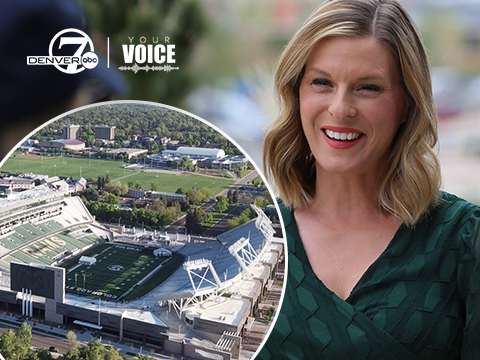You probably don't think much about runways — even when you're flying. But, Colorado has some of the longest in the country — and in the western hemisphere for that matter. It's all because of the weather and climate across the state.
Colorado Springs has a 13,500-foot runway — one of 28 U.S. airports with a runway of that length. Several of those are military-only operations. It's rare for a commercial airport to have a runway this long. Denver breaks the scale with a runway that's a whopping 16,000 feet long! That's over 3 miles or 53 football fields. To understand why, it helps to understand how planes fly.

Put simply, airplanes fly because of a difference in the air pressure above and below the wing of the plane, created by the shape of the wing. Air pressure is higher below the wing, pushing the plane upward. Air pressure is the key to why runways are so long in Colorado.

Colorado Springs sits at 6,000 feet of elevation. Air pressure here is about 80% of sea level pressure. Denver is famously the Mile High City — and air pressure is around 85% of sea level. Our mountain airports are even higher. Eagle-Vail sits at 6,547 feet, and Aspen Regional sits at 7,800 feet. With less air to work with, airplanes need to fly faster to get the same amount of lift.
But there's a problem. Just like driving a car, reaching a higher speed takes longer and takes more distance. Meanwhile, jet engines work by compressing air and shoving it out the back at high speed. With less air coming into the engine, less air can be pushed out. So it's a one-two punch: planes need to travel faster to take off, but their engines generate less power due to the altitude so the plane accelerates more slowly.

When a runway is built, weather is the main consideration. Airplanes generally try to takeoff and land in the wind. By doing so, they can take off and land more slowly. For a plane to fly, all that matters is how fast air is flowing over the wings. It doesn't matter how fast the wheels are spinning over the ground. That's why your kite flies above you, even if it's not actually moving at all. In Colorado Springs and Denver, the "average wind" direction is north-south. So it's no coincidence that two of Colorado Springs' three runways (including the main one used for passenger flight operations) and four of Denver's six runways, are oriented north-south as a result. While the runways are still very long, they're shorter than they'd need to be if they were built in another direction.

Runway designers also consider average temperatures and precipitation when building a runway as they also affect aircraft performance, and therefore, runway length considerations. Because of warm summer temperatures on the Colorado Front Range, runways need to be unusually long. This might not seem like a big deal, but it ultimately requires more planning by engineers to guarantee the safety of passengers traveling to and from Colorado.





